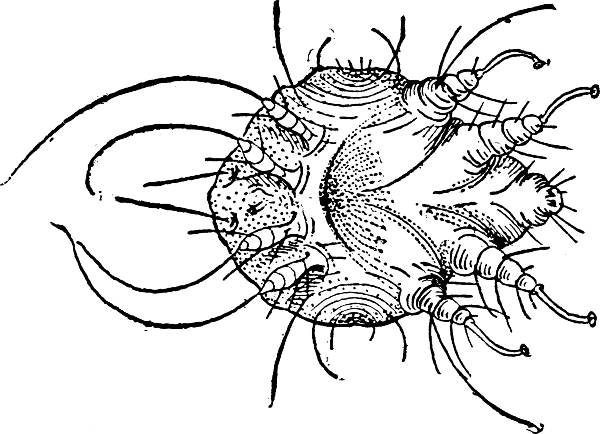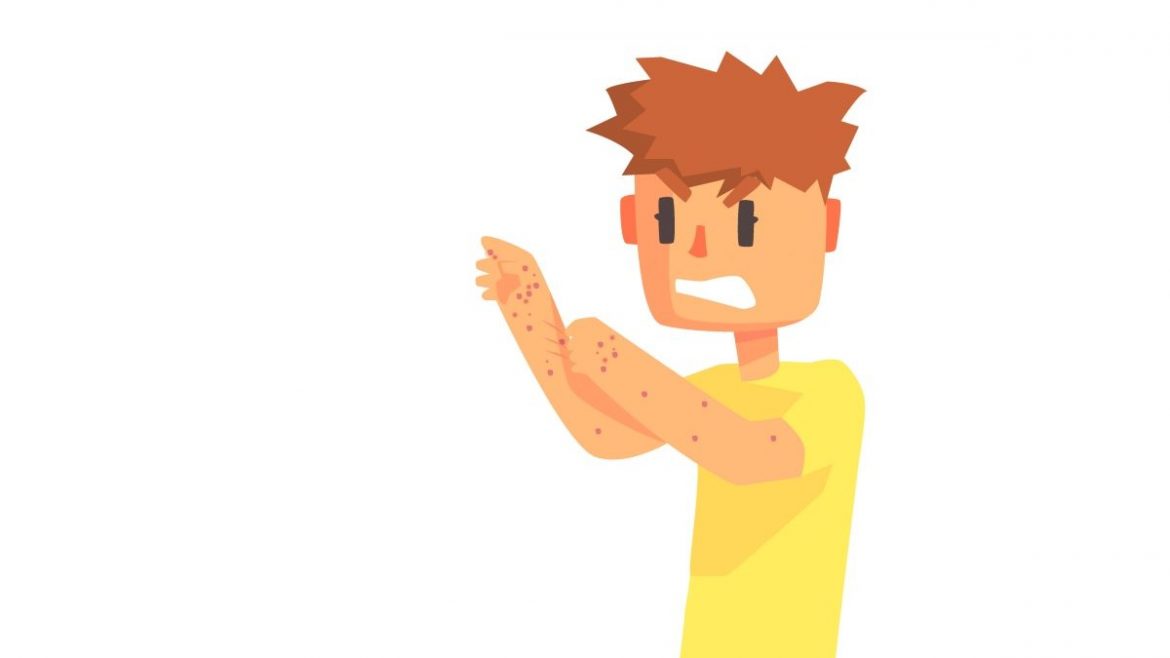The word scabies sounds obsolete, a disease from another era. Calling it scabies sounds more elegant, but in the end it’s the same thing. The point is that, although it may surprise you, scabies is still present in our environment and it is not so rare.
Have you heard about scabies recently? In this article I will review the most important characteristics of this disease, which is not so uncommon nowadays.
What is scabies?
It is a disease characterized by intense itching, especially at night. It is accompanied by pimples, typically on the hands and feet, armpits, chest, genital area and buttocks. If not diagnosed in time, it can spread to the whole body.
The pimples may start as small vesicles with fluid that burst when scratched. It is very characteristic that some of them have the shape of a linear path of a few millimeters, you will read later why ;)
They rarely appear on the face, except in young children.
In this link you can see pictures of scabies.
The disease is acquired through close skin-to-skin contact (including sexual contact) with someone who has the disease. It can also be transmitted through casual contact and fomites (bedding, pillows, etc.), but this is less common. It is not uncommon for people living in the same house to have the disease at the same time.
Why does scabies appear?
The infestation is caused by the sarcoptes scabiei mite, which measures approximately 0.3 mm (females are larger than males).

It produces a proteolytic enzyme that allows it to penetrate the most superficial layer of the skin, crawl through it, lay its eggs and reproduce. Hence the linear appearance we sometimes see, called an acarine burrow.
The body reacts to this “foreign presence” with a very itchy reaction.
Sarcoptes scabiei can live outside the skin for 24-36 hours, which is why it can sometimes be spread through sheets, pillows, or other fomites shared with a sick person.
How is scabies diagnosed?
The most accurate diagnosis is made by scraping scales from one of the pimples (usually on the hands) and examining it under a microscope to find the mite, its eggs, or its feces. There are other diseases that also cause skin rashes that we need to differentiate from.
However, in most cases where we do not have a microscope, the typical characteristics of the disease mentioned above help us to make the diagnosis. If we also use a dermatoscope, the diagnosis is usually easier because we can observe the sarcoptes with it. It is rare that we need to take a biopsy.
How is scabies treated?
It is important to treat the diagnosed person, as well as those who live with him/her. At the same time, to avoid relapses, hygiene protocols should be followed to eliminate the mite from the environment.
How to remove the s.scabiei?
Permethrin 5% cream is used as a treatment, which is applied to the entire surface of the skin (including the head in young children) and left on overnight. It is washed off in the morning. Another oral treatment is ivermectin.
Both treatments must be prescribed by a doctor and are repeated every week to prevent recurrence of sarcoptes that have not hatched from their eggs.
It is important to note that treatment will improve itching in the first few days after treatment, but some itching may persist for up to four weeks.
Treating scabies is a real challenge in many cases, as recurrence within the same family is not uncommon. In this article I will talk about how to cure scabies (in Spanish).
How do I prevent reinfestation?
The treatment of scabies requires an important cleaning ritual at home.
All clothing, sheets, towels, and shoes used during the illness should be washed at 60°. Delicate clothing or shoes that cannot be washed should be placed in sealed plastic bags for 5 days.
